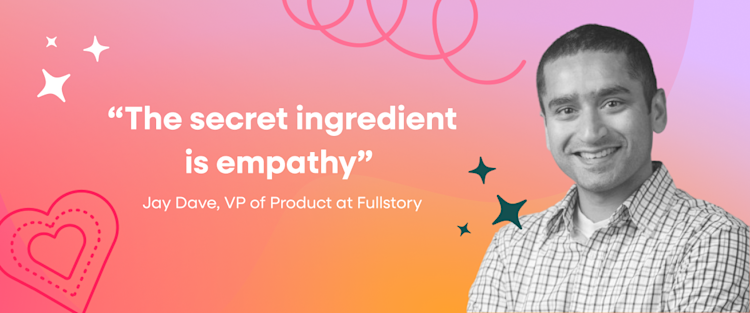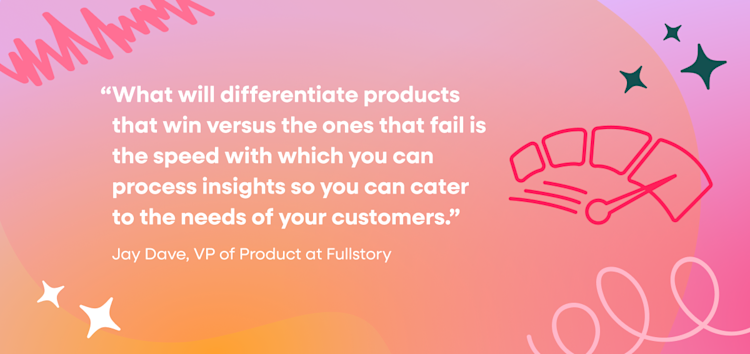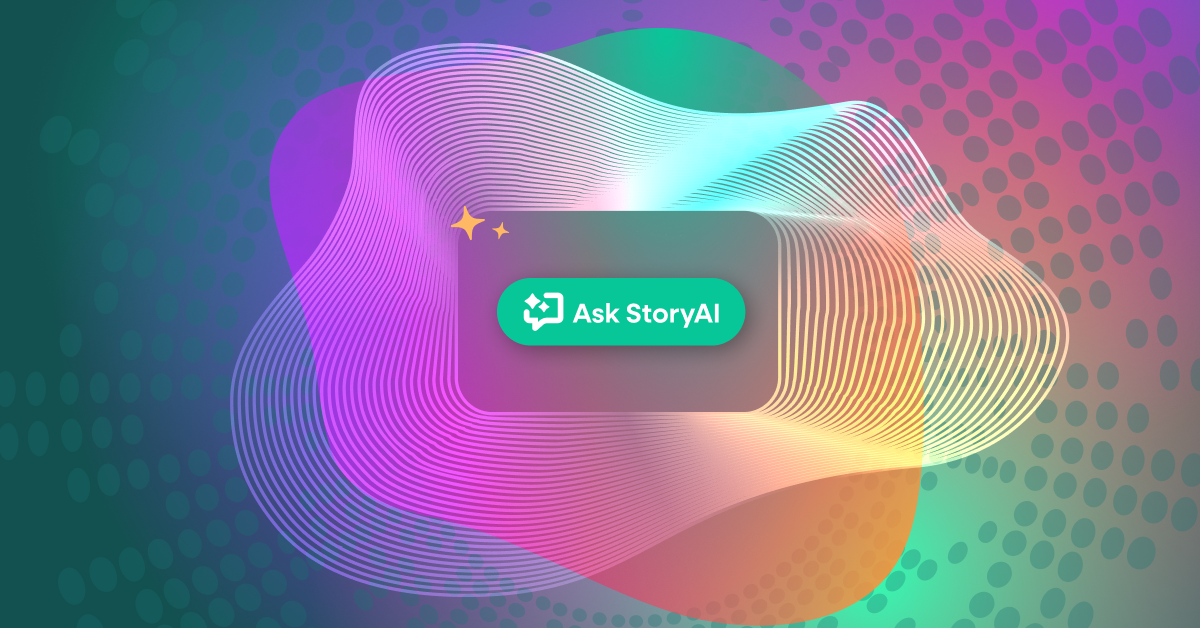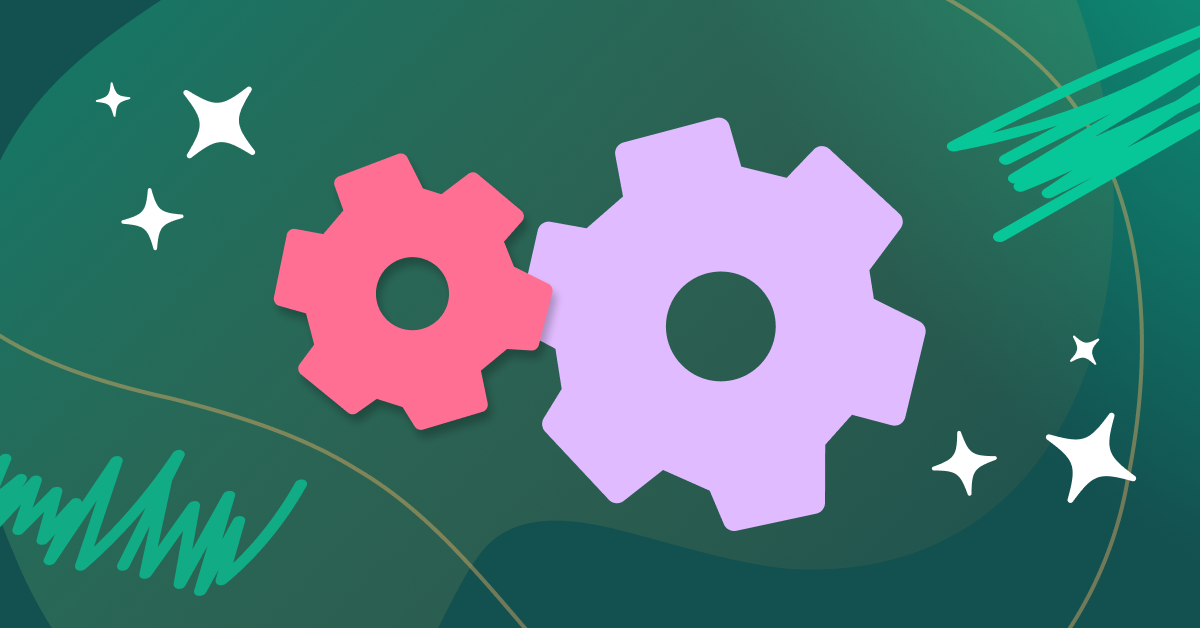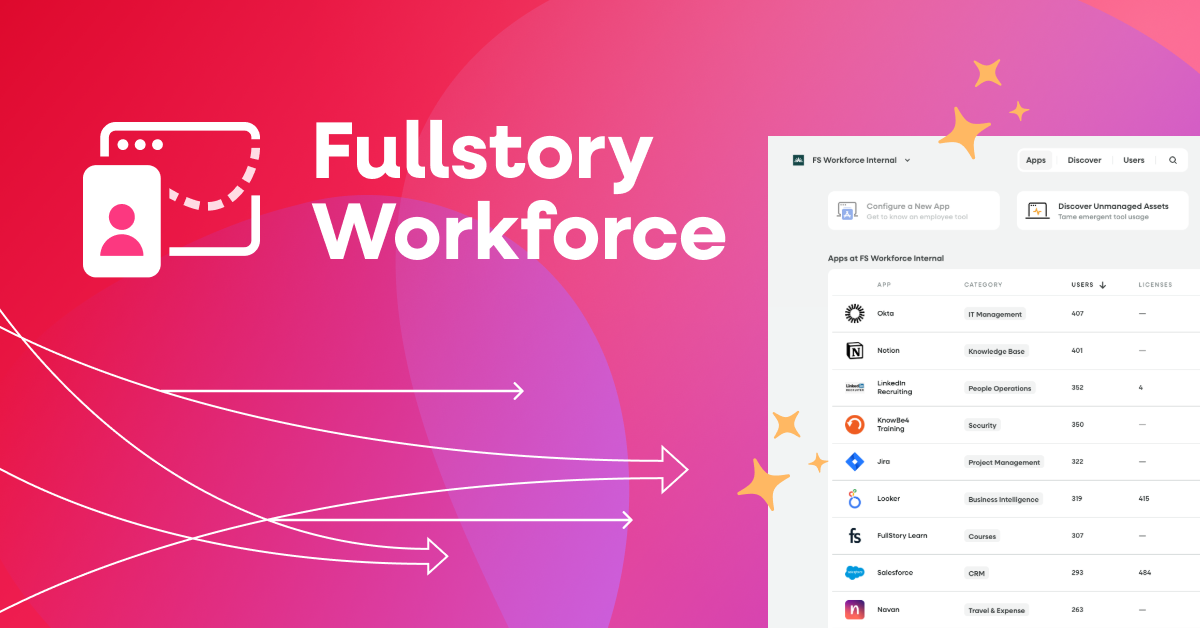Jay Dave, Fullstory’s Vice President of Product, has decades of experience working for companies like Microsoft, Amazon, and Qualtrics. He brings a unique perspective shaped by time on both sides of the build—writing the code as an engineer and shaping strategy as a product leader.
In a recent conversation, he reflected on his path and shared four lessons that impact the way he thinks about product, people, and decision-making.
Empathy is the secret ingredient
Product managers and engineers do very different work, but they ultimately think about the same problems. According to Dave, the most effective people in both roles share one key ingredient.
“The secret ingredient is empathy,” he said. "Unless you have a deep, deep understanding of your users, it’s not possible for you to look around the corners and design things that are loved by customers. You cannot anticipate what your customers need.”
Trust what you see, not just what customers say
Empathy is everything—but how do you build it? According to Dave, you can’t afford to only listen to what customers say. "As humans, what we say vs. what we do is sometimes noncongruent," he explained.
When people’s words don’t give you the full story, their behavior can fill in the blanks.
"[Behavioral data] gives you a high-definition replay of the lived experience of your customers,” said Dave, “and helps validate your understanding.”
He compared it to the difference between playing detective and being an eyewitness. “[Verbal feedback versus behavioral data] is the difference between looking at a fingerprint or footprint and guessing what happened versus seeing it happen.”
Good intentions don’t make good experiences
Product leaders are constantly balancing competing priorities. "Sometimes there is a trade-off between scope and velocity, or between usability and security," Dave explained. "Great companies and great leaders understand those trade-offs and intentionally make them."
But even the best intentions can go sideways—a lesson Dave learned at Microsoft, when his team built a security feature designed to protect users by running programs with limited system access. The technology worked exactly as planned, but the user experience suffered.
"Behind the scenes, this feature was magical," he explained. "But the way it manifested in the product was that it had friction.”
When choosing between competing priorities, remember: users experience the consequences of every trade-off you make.
Move fast or fall behind
Finally, Dave reflected on just how much things have changed over the course of his career. “We’ve gone through multiple paradigm shifts,” he said. “Mouse on a screen. Touch on mobile phones. Voice. Now we’re on the chat interface.”
To keep up in a constantly evolving world, you must be able to turn understanding into action quickly.
“What will differentiate products that win versus the ones that fail,” he emphasized, “is the speed with which you can process insights and can cater to the needs of your customers.”
That’s what Fullstory was built to support. “At the core of Fullstory are a set of machine learning algorithms that help you improve experiences and deliver behavioral insights in real time,” he said. “That’s the kind of partner you need to bring you into this next iteration of user experience improvements.”
Want to see how Fullstory helps teams turn real-time behavioral data into better product decisions? Book a demo today.

